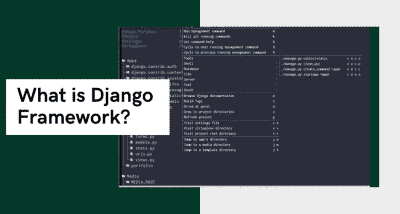Amazon Web Services (AWS)
- Swetha Ramdurg
- Jun 17, 2019
- 0 comment(s)
- 2863 Views

What is AWS (Amazon Web Services) ?
Amazon web services provides building blocks that you can quickly assemble to support virtually any workload. Adjust them as your need changes without upfront costs or ongoing commitments and only pay for what you use. Lets take a look at that again, this time in slow motion.
Whether you are building applications for colleagues or consumers, for enterprise support or e-commerce with Amazon web services, you will find complete set of highly available services which are designed to work together to build sophisticated scalable applications delivered over internet. You will have on-demand access to highly durable storage, low cost compute , high performance databases and the tools to manage these resources, all available with upfront costs for you, Only pay for what you use. Lets say you are building a Database driven application where high availability and low cost are important. You can use AWS to store your important documents and files with storage services designed for 11 lines of durability and power the app with your choice of relational or non-relational databases. You will have a reliable managed databases up and running in minutes across multiple geographically isolated data centers for redundancy and availability. You can then deploy your application using the tools and languages you are used to either with full administrative route access or as a prepackaged app such as Sap Business Objects, Micro Strategy or Microsoft SharePoint all available from the AWS marketplace. You will find large selection of computational resources to power your application with support i/o storage and CPU intensive workloads. Experimentation becomes easy and low-risk with on-demand access to a wide range of hardware configurations and a flexibility to evaluate and run virtually any technology or tool plus your infrastructure can grow and shrink automatically as your needs change . You can round out your application with load balancing , domain name services, a global content delivery network and automate everything with a wide arrays of SDKs. Working with your data is easy too with simple tools to integrate, import and export your data, manage Hadoop clusters, spin up a petabyte scale data warehousing, archiving frequently accessed information, federate identity and build compliant , secure environments which integrate into your existing infrastructure by a private dedicated connectivity . You will also have access to the fine-grained network and identity management security certification and access controls your organization needs .With AWS you will find a complete cloud platform ready for use for virtually any workload for business applications, big data or building games. AWS gives you access to the resources you need to create sophisticated scalable applications of any size or shape .
-
AWS is located in 9 geographical 'Regions‘. Each Region is wholly contained within a single country and all of its data and services stay within the designated Region.
-
Each Region has multiple 'Availability Zones', which are distinct data centers providing AWS services. Availability Zones are isolated from each other to prevent outages from spreading between Zones. However, Several services operate across Availability Zones (e.g. S3, DynamoDB).
What is AWS Offering?
-
Low Ongoing Cost:, pay-as-you-go pricing with no up-front expenses or long-term commitments.
-
Instant Elasticity & Flexible Capacity: (scaling up and down) Eliminate guessing on your infrastructure capacity needs.
-
Speed & Agility: Develop and deploy applications faster Instead of waiting weeks or months for hardware to arrive and get installed.
-
Apps not Ops: Focus on projects. Lets you shift resources away from data center investments and operations and move them to innovative new projects.
-
Global Reach: Take your apps global in minutes.
-
Open and Flexible: You choose the development platform or programming model that makes the most sense for your business.
-
Secure: Allows your application to take advantage of the multiple layers of operational and physical security in the AWS data centers to ensure the integrity and safety of your data.
The Amazon Web Services Universe
Management Interface:
Amazon Elastic Compute Cloud(EC2):
-
A web service that provides resizable compute capacity in the cloud.
-
EC2 allows creating Virtual Machines (VM) on-demand. Pre-configured template Amazon Machine Image (AMI) can be used to launch instance/s and get it running immediately .You can use different AMIs to launch instances when you need instances with different configurations. Creating and sharing your own AMIs is possible through AWS Marketplace.
-
Auto Scaling allows automatically to scale up the capacity seamlessly when there is high load to maintain performance and scales down when there is less load to minimize the cost.
-
Elastic Load Balancing automatically distributes the incoming application traffic across multiple EC2 instances.
-
Provide tools to build failure resilient applications by launching application instances in separate Availability Zones.
-
VM Import/Export enables you to import existing VM images into Amazon EC2 from existing environment and can export them back at any time.
Amazon Elastic Block Store (EBS):
-
Provides block level storage volumes (1 GB to 1 TB ) for use with Amazon EC2 instances.
-
Multiple volumes can be mounted to the same instance.
-
EBS volumes are network-attached, and persist independently from the life of an instance.
-
Storage volumes behave like raw, unformatted block devices, allowing users to create a file system on top of Amazon EBS volumes, or use them in any other way you would use a block device (like a hard drive).
-
EBS volumes are placed in a specific Availability Zone, and can then be attached to instances also in that same Availability Zone.
-
Each storage volume is automatically replicated within the same Availability Zone.
-
EBS provides the ability to create point-in-time snapshots of volumes, which are persisted to Amazon S3.
-
These snapshots can be used as the starting point for new Amazon EBS volumes, and protect data for long-term durability.
-
The same snapshot can be used to instantiate as many volumes as you wish.
-
These snapshots can be copied across AWS regions.
Amazon Simple Storage Service (S3):
-
Amazon S3 provides a simple web services interface that can be used to store and retrieve any amount of data, at any time, from anywhere on the web.
-
Write, read, and delete objects containing from 1 byte to 5 terabytes of data each. The number of objects you can store is unlimited.
-
Each object is stored in a bucket and retrieved via a unique, developer-assigned key.
-
A bucket can be stored in one of several Regions.
-
You can choose a Region to optimize for latency, minimize costs, or address regulatory requirements.
-
Objects stored in a Region never leave the Region unless you transfer them out.
-
Authentication mechanisms are provided to ensure that data is kept secure from unauthorized access.
-
Objects can be made private or public, and rights can be granted to specific users.
-
S3 charges based on per GB-month AND per I/O requests AND per data modification requests.
Amazon Virtual Private Cloud (VPC):
-
Amazon VPC lets you provision a logically isolated section of the Amazon Web Services (AWS) Cloud.
-
You have complete control over your virtual networking environment, including:
-
selection of your own IP address range,
-
creation of subnets, and
-
configuration of route tables and network gateways.
-
VPC allows bridging with an onsite IT infrastructure with an encrypted VPN connection with an extra charge per VPN Connection-hour.
-
There is no additional charge for using Amazon Virtual Private Cloud, aside from the normal Amazon EC2 usage charges.
Amazon Elastic MapReduce (EMR):
-
Amazon EMR is a web service that makes it easy to quickly and cost-effectively process vast amounts of data using Hadoop.
-
Amazon EMR distribute the data and processing across a resizable cluster of Amazon EC2 instances.
-
With Amazon EMR you can launch a persistent cluster that stays up indefinitely or a temporary cluster that terminates after the analysis is complete.
-
Amazon EMR supports a variety of Amazon EC2 instance types and Amazon EC2 pricing options (On-Demand, Reserved, and Spot).
-
When launching an Amazon EMR cluster (also called a "job flow"), you choose how many and what type of Amazon EC2 Instances to provision.
-
The Amazon EMR price is in addition to the Amazon EC2 price.
-
Amazon EMR is used in a variety of applications, including log analysis, web indexing, data warehousing, machine learning, financial analysis, scientific simulation, and bioinformatics.
Amazon Relational Database Service (RDS):
-
Amazon RDS is a web service that makes it easy to set up, operate, and scale a relational database in the cloud.
-
Amazon RDS gives access to the capabilities of a familiar MySQL, Oracle or Microsoft SQL Server database engine.
-
Code, applications, and tools already used with existing databases can be used with RDS.
-
Amazon RDS automatically patches the database software and backs up the database, storing the backups for a user-defined retention period and enabling point-in-time recovery.
-
Amazon RDS provides scaling the compute resources or storage capacity associated with the Database Instance.
-
Pay only for the resources actually consumed, based on the DB Instance hours consumed, database storage, backup storage, and data transfer.
-
On-Demand DB Instances let you pay for compute capacity by the hour with no long-term commitments.
-
Reserved DB Instances give the option to make a low, one-time payment for each DB Instance and in turn receive a significant discount on the hourly usage charge for that DB Instance.
SQL Databases
-
In relational databases (SQL Databases), ACID (Atomicity, Consistency, Isolation, Durability) is a set of properties that guarantee that database transactions are processed reliably.
-
Atomicity requires that each transaction is "all or nothing": if one part of the transaction fails, the entire transaction fails, and the database state is left unchanged.
-
The consistency property ensures that any transaction will bring the database from one valid state to another.
-
The isolation property ensures that the concurrent execution of transactions results in a system state that would be obtained if transactions were executed serially,.
-
Durability means that once a transaction has been committed, it will remain so, even in the event of power loss, crashes, or errors.
Amazon DynamoDB :
-
DynamoDB is a fast, fully managed NoSQL database service that makes it simple and cost-effective to store and retrieve any amount of data, and serve any level of request traffic.
-
All data items are stored on Solid State Drives (SSDs), and are replicated across 3 Availability Zones for high availability and durability.
-
DynamoDB tables do not have fixed schemas, and each item may have a different number of attributes.
-
DynamoDB has no upfront costs and implements a pay as you go plan as a. a flat hourly rate based on the capacity reserved.
NoSQL Databases
-
A NoSQL database provides a mechanism for storage and retrieval of data that employs less constrained consistency models than traditional relational databases.
-
NoSQL databases only support Eventual Consistency which is a consistency model used in distributed computing that informally guarantees that, if no new updates are made to a given data item, eventually all accesses to that item will return the last updated value.
-
NoSQL databases are often highly optimized key–value stores intended for simple retrieval and appending operations, with the goal being significant performance benefits in terms of latency and throughput.
-
Key–value stores allow the application to store its data in a schema-less way.
-
The data could be stored in a datatype of a programming language or an object. Because of this, there is no need for a fixed data model.
Amazon Elastic Beanstalk:
-
AWS Elastic Beanstalk provides a solution to quickly deploy and manage applications in the AWS cloud.
-
You simply upload your application, and Elastic Beanstalk automatically handles the deployment details of capacity provisioning, load balancing, auto-scaling, and application health monitoring.
-
Elastic Beanstalk leverages AWS services such as Amazon EC2, Amazon S3, ….
-
To ensure easy portability of your application, Elastic Beanstalk is built using familiar software stacks such as:
-
Apache HTTP Server for Node.js, PHP and Python
-
Passenger for Ruby,
-
IIS 7.5 for .NET
-
Apache Tomcat for Java.
-
There is no additional charge for Elastic Beanstalk - you pay only for the AWS resources needed to store and run your applications.
Amazon CloudWatch:
-
Amazon CloudWatch provides monitoring for AWS cloud resources and the applications customers run on AWS.
-
Amazon CloudWatch lets you programmatically retrieve your monitoring data, view graphs, and set alarms to help you troubleshoot, spot trends, and take automated action based on the state of your cloud environment.
-
Amazon CloudWatch enables you to monitor your AWS resources up-to-the-minute in real-time, including:
-
Amazon EC2 instances,
-
Amazon EBS volumes,
-
Elastic Load Balancers,
-
Amazon RDS DB instances.
-
Metrics such as CPU utilization, latency, and request counts are provided automatically for these AWS resources.
-
Customers can also supply their own custom application and system metrics, such as memory usage, transaction volumes, or error rates,.
Amazon Simple Workflow Service (SWF):
-
Amazon SWF is a task coordination and state management service for cloud applications.
-
Using Amazon SWF, you structure the various processing steps in an application that runs across one or more machines as a set of “tasks.”
-
Amazon SWF manages dependencies between the tasks, schedules the tasks for execution, and runs any logic that needs to be executed in parallel.
-
The service also tracks the tasks’ progress.
-
As the business requirements change, Amazon SWF makes it easy to change application logic without having to worry about the underlying state machinery and flow control.














